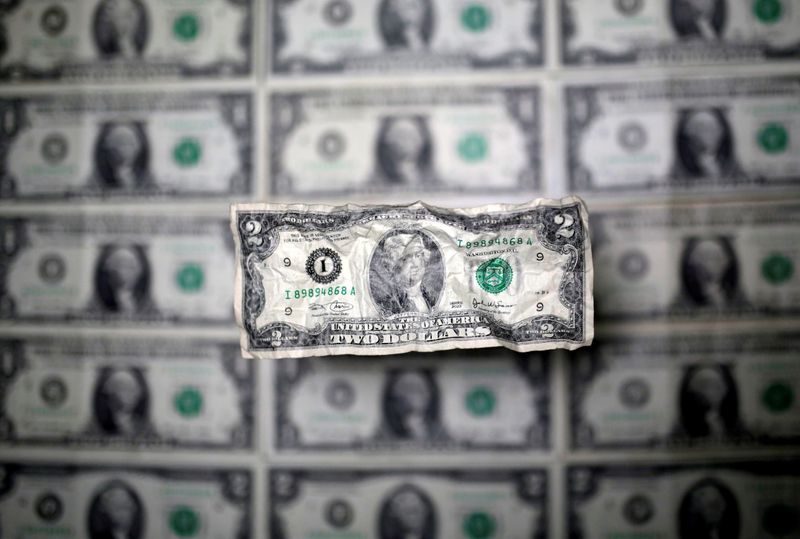By Karen Pierog
CHICAGO (Reuters) - Worries over surging inflation and a new variant of the coronavirus are roiling the U.S. corporate junk bond market, though some believe the tumble could draw investors seeking higher yields.
November marked the worst month since the start of the pandemic for the bonds of low-rated companies, with high-yield bonds notching an average return of minus 1.03%, the lowest since March 2020, according to Morningstar Direct data.
Spreads, which indicate the yield premium investors demand to hold junk-rated debt over safer U.S. Treasuries, also widened the most since the beginning of the COVID-19 pandemic.
Among the factors driving the moves were fears that higher inflation will force the Federal Reserve to normalize monetary policy faster than expected, as well as a rush away from comparatively risky assets on worries over the Omicron variant, analysts said.
"With most managers sitting on healthy returns for the year, there's a bit of de-risking as well," said John McClain, portfolio manager at Brandywine Global Investment Management.
But McClain said November's poor showing could aid the market in the coming year, with the higher yields that have resulted from falling prices potentially drawing investors.
"We're back to yields that look like the beginning of 2021 and spreads that are reasonably attractive here," he said. "It sets the asset class up well for investor demand going into 2022."
The option-adjusted yield spread of the ICE (NYSE:ICE) BofA U.S. High Yield Index, a commonly used benchmark for the junk bond market, increased by 51 basis points in November, the biggest monthly jump since March 2020.
Graphic: Junk Bond Spreads Widen, https://fingfx.thomsonreuters.com/gfx/ce/zjpqkykeypx/Pasted%20image%201638376953981.png On Tuesday, the spread was at its widest since February at 367 basis points.
The funds also saw their biggest weekly net outflow since March in the week ending Nov. 24, with investors pulling a net $3.3 billion from the category, Refinitiv Lipper data showed.
Among the victims of last week’s Omicron-triggered rout was the iShares iBoxx High-Yield Corporate Bond exchange-traded fund, which sank to its lowest level since November 2020 in frenzied risk-off trading.
Inflation, which erodes bonds' interest payments over time, was a key worry: BofA's November survey of U.S. credit investors found 73% citing inflation as their biggest concern, up from 66% in September and the highest share since 2012.
U.S. consumer prices accelerated in October as Americans paid more for gasoline and food, leading to the biggest annual gain in 31 years.
Worries over supply chain bottlenecks were another factor that may have weighed on junk-rated companies, according to Collin Martin, fixed income strategist at the Schwab Center for Financial Research.
“Anything that can negatively impact your cash flows poses a risk," he said.
Martin added that with three straight months of losses in high-yield bonds, some investors may have decided to lock in profits after a good year.
Year-to-date total returns on the ICE BofA High-Yield Index, at 3.4%, were higher than those for other ICE indices tracking investment-grade corporate, as well as municipal bonds, according to ICE Data Services.
"Some investors said 'let me rush to the exits now and get out of here and find a better opportunity to go back in' because prior to even the start of November there was just very little upside in high yield," Martin said.
